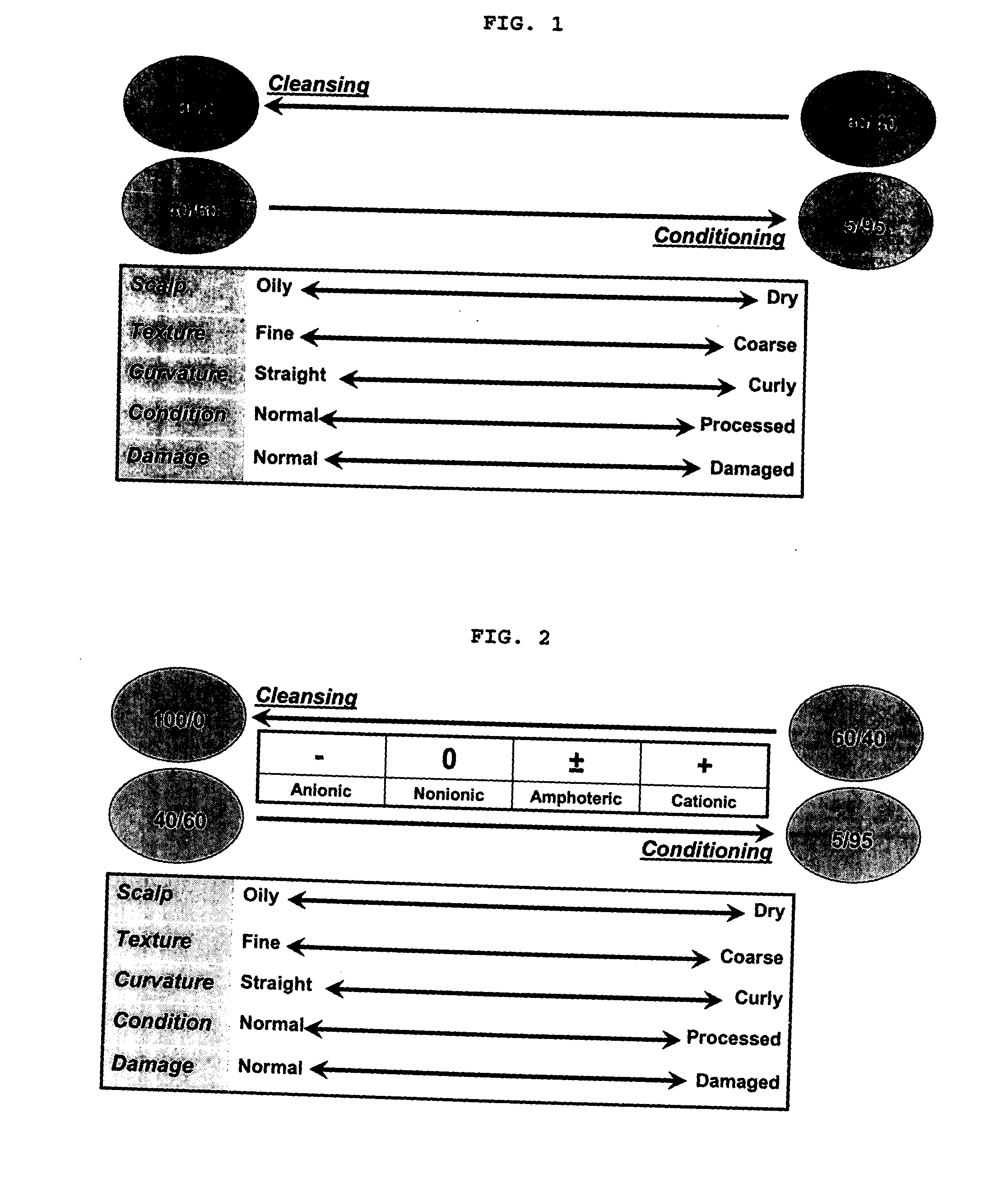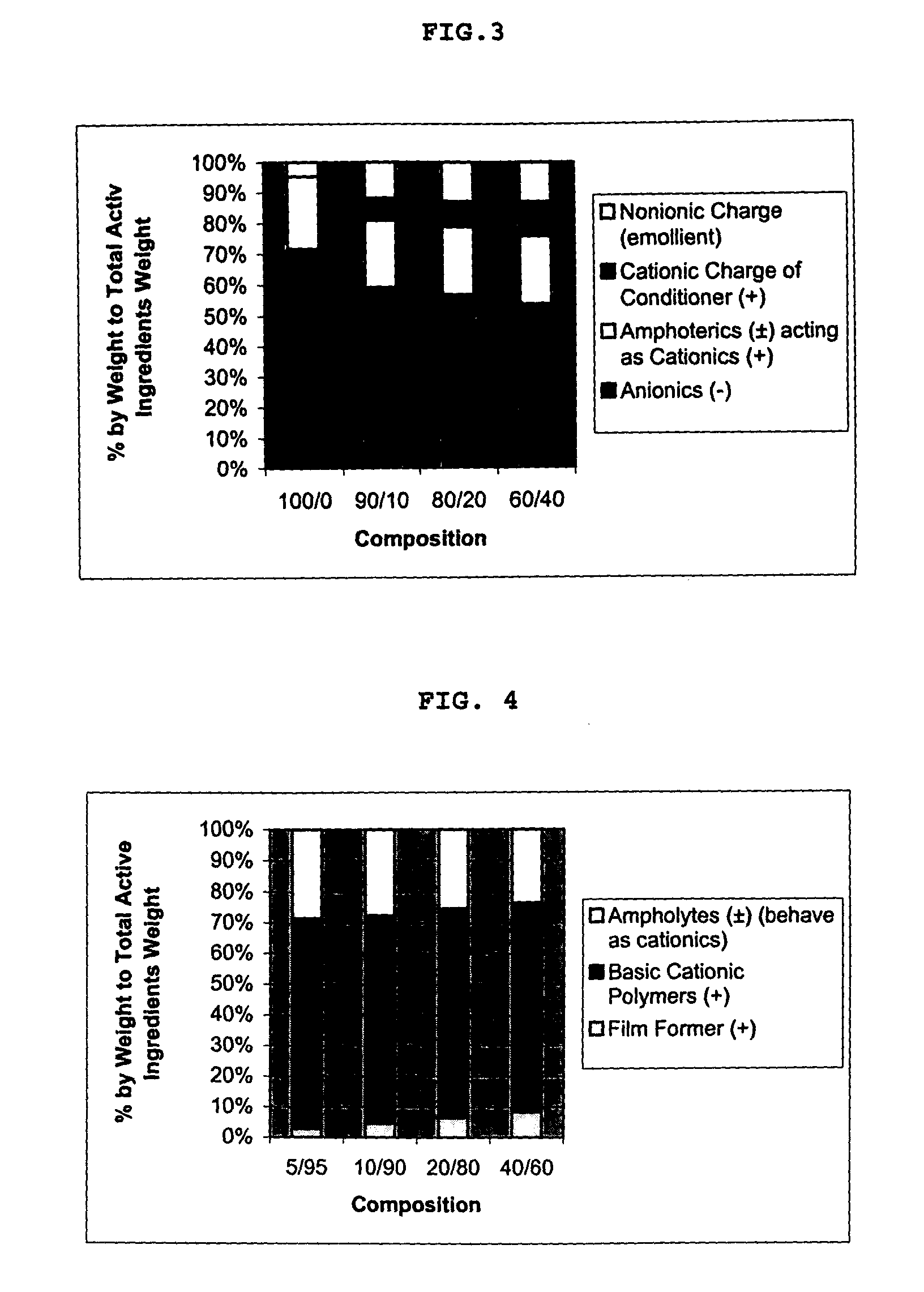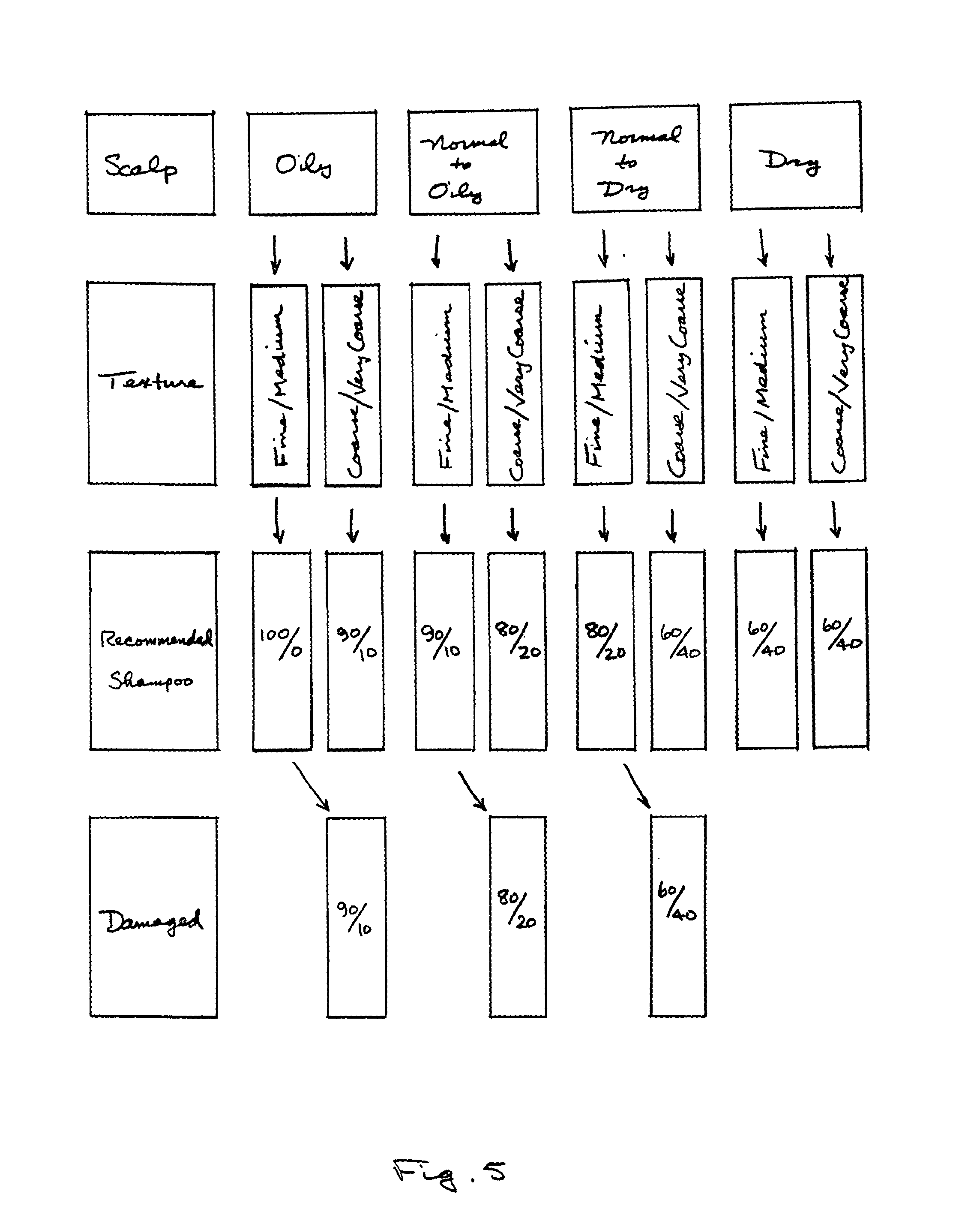Proportional method for diagnosing and appropriately cleansing and conditioning hair and a kit of proportional shampoos and conditioners for practicing the method
a proportional method and shampoo and conditioner technology, applied in the field of hair care, can solve the problems of inability to determine which shampoo/conditioner pair is most suitable, affecting the condition of hair, and weak hair,
- Summary
- Abstract
- Description
- Claims
- Application Information
AI Technical Summary
Benefits of technology
Problems solved by technology
Method used
Image
Examples
example 1
In accordance with the invention, four (4) proportional shampoos were formulated with increasing graduated amounts of ampholyte complex (±charged components), cationic conditioning agents (+charged components) and nonionic emollient / repair agents (0 charged components. The weight percents of the anionic (−charged) components and the other nonionic were kept relatively constant. The shampoos were designated “{fraction (100 / 0)}”, “{fraction (90 / 10)}”, “{fraction (80 / 20)}”, and “{fraction (60 / 40)}” based on the relative cleansing to conditioning activities provided by the components. As will be apparent from the designation “100”, this particular formulation omitted cationic conditioning agents. A listing of the key components (including their charge categories) in the shampoos formulations is set forth in Table 9 below. A bar chart illustrating the general ratio of the components (classified by charge) is also found in FIG. 3. The remaining components included water and common excipi...
example 2
In a manner analogous to Example 1, four (4) proportional conditioners were formulated with decreasing graduated amounts of ampholyte complex (±charged components), and nonionic emollient / repair agents (0 charged components). The weight percentages of some of the cationic conditioning agents (+charged components) were kept relatively constant. All of the formulations omitted anionic (−charged) components since they are used primarily in shampoos. The conditioners were designated “{fraction (5 / 95)}”, “{fraction (10 / 90)}”, “{fraction (20 / 80)}”, and “{fraction (40 / 60)}” based on the relative proportion of surfactant to conditioner. A listing of the key components (including their charge categories) in the conditioner formulations is set forth in Table 12 below. A bar chart illustrating the general ratio of the components (classified by charge) is also found in FIG. 4. The remaining components included water and common excipients such as fragrance, preservatives, extracts, essential oi...
##ic example 3
PROPHETIC EXAMPLE 3
FIG. 5 is a flow chart showing the determination of the proportional shampoo to be used for the eight combinations of scalp type and hair texture. This determination is illustrated below for several possible scenarios. a) Person shampoos hair daily; if she did not do so, she would notice a significant amount of sebum on the hair and scalp. Scalp type is oily. Hair is seen to be fine, and would clump together and lie flat if not cleansed daily. Referring to FIG. 5, the proportional shampoo recommended is {fraction (100 / 0)}. b) Person shampoos hair every other day, if she did not do so, she would notice a significant amount of sebum on the hair and scalp. Scalp type is normal / oily.
Hair is seen to be very coarse, wiry, unruly, curly, and is difficult to control when styling. Referring to FIG. 5, the proportional shampoo recommended is {fraction (80 / 20)}. c) Person shampoos daily because of exercise, but scalp is observed to be dry and flaking. Hair has flyaway a...
PUM
| Property | Measurement | Unit |
|---|---|---|
| frequency | aaaaa | aaaaa |
| amphoteric | aaaaa | aaaaa |
| Tensile Strength | aaaaa | aaaaa |
Abstract
Description
Claims
Application Information
 Login to View More
Login to View More - R&D
- Intellectual Property
- Life Sciences
- Materials
- Tech Scout
- Unparalleled Data Quality
- Higher Quality Content
- 60% Fewer Hallucinations
Browse by: Latest US Patents, China's latest patents, Technical Efficacy Thesaurus, Application Domain, Technology Topic, Popular Technical Reports.
© 2025 PatSnap. All rights reserved.Legal|Privacy policy|Modern Slavery Act Transparency Statement|Sitemap|About US| Contact US: help@patsnap.com



